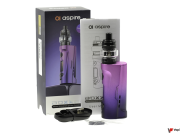The THRA opened its statement by explaining the differences between e-cigarettes and HnB devices, adding that despite the fact that vaping products contain no tobacco, they tend to be labelled as tobacco products.
“What are vaping products?
In its simplest form vaping products produce an inhalable vapour which may or may not contain nicotine, as opposed to tobacco products which produce smoke.
This however does not provide a useful definition: There are a growing number of diverse types of vaping product entering the tobacco harm reduction market. These would include, for example: Electronic Liquid Vaporizers (“ELV’s”); Heat not Burn vaporizers (“HnB”) such as IQOS, Ploom and Glo – Tobacco Companies also produce ELV’s
At this point in time there are two types of vapour delivery, ELV’s produced by independent companies and the tobacco industry, and HnB, produced exclusively by a tobacco company.
There is confusion in some quarters as to what these products are.
The most popular vaping devices, by far, are ELV’s. These are used as a pleasurable alternative to smoking by many millions of consumers worldwide. They are very simple devices which heat a liquid consisting of, propylene glycol, vegetable glycerine, sometimes nicotine, and food grade flavourings. That is it!
HnB is very different to ELV’s.
The main difference is that HnB products heat a mixture that contains tobacco and other products yet to be defined to produce an aerosol. HnB is a tobacco product whereas with ELV’s there is no generic connection to the tobacco plant other than, sometimes, the inclusion of nicotine. To put this another way, ELV’s are no more a tobacco product than an orange drink with sugar added is a sugar product – because of the health industries obsession with nicotine, all vaping products containing nicotine, and even those which do not, are deemed as tobacco products.
In order to avoid confusion, products which contain tobacco will be considered tobacco products, and products which do not contain tobacco will be considered consumer products. Note that medical products which contain nicotine fall outside the scope of this statement as they are products designed as an aid to quitting smoking and are formally approved and are not harm reduced alternatives to smoking.”
E-cigarettes are safer alternatives to cigarettes
The THRA statement then moved on to address the number of concerns associated with vaping products, pointing out that scientific research has shown that e-cigarettes do not contain the deadly substances found in cigarettes and hence they should be considered as safer alternatives.
“Risk Profile of ELV’s.
So far there is no evidence of harm as a result of ELV use. All that exists are two distinct arguments: That ELV products will lead to long term harms and that we do not know enough about ELV’s. What we do know is that ELV products do not contain the harmful ingredients found in cigarette smoke and on that basis, they are far, far safer than smoking.”
Countless scientific studies in favor of vaping
Subsequently, the statement referred to a number of studies, which clearly indicate that vaping is significantly safer than smoking and should be considered as a harm reduction practice for smokers.
“And now ‘real’ evidence is beginning to emerge. The following refers to a study which is thought to be the first looking at long-term vaping outcomes in “real world” users. The study which assures us of the minimal risk inherent in ELV use and was by researchers from a number of institutions, including University College London, and the Roswell Park Cancer Institute and Centers for Disease Control and Prevention (both in the US).
What is very interesting about this study is the way in which it has been reported. Its weaknesses have been deliberately highlighted: The audience is clearly informed about recall bias and confounding. You can see this in the UK National Health Service publication, “Long-term vaping ‘far safer than smoking’ says ‘landmark’ study.” (here).
So, it is a landmark study, not just because it was the first of its kind, but because it demonstrates a degree of honesty not to be found in ‘studies’ proclaiming harms from ELV use.
It is the inherent dishonesty / incompetency which is the bedrock for supposed evidence of harm, or the potential for harm, from ELV use.”
Popcorn lung? Formaldehyde? Youth Vaping?
The THRA proceeded to list a number of unsound accusations that have been directed at vaping products, and that are still circulating and informing policy around the world, despite being disproved.
“There has been a tsunami of accusations purporting to be evidence of harm from ELV use. In fact, all it amounts to is wave after wave of headline generating, click-bait rubbish.
Examples of this can be found in the claims that ELV use will lead to:
- Popcorn lung disease; cancer; heart disease; blindness; lipoid pneumonia, and in one scare story here in Canada, tuberculosis. The list is endless and supported only by studies littered with confounding issues, contradictions, hidden statistics, exaggerations, deliberate deceptions, and demonstrating in some cases, total incompetency;
- Claims of dangerous levels of formaldehyde where the researchers did not know how to work an ELV device (maybe they did in which case they were lying);
- Lipoid pneumonia where the doctors thought e liquid was an oil (and failed to spot that the inhaler being used by the patient contained oleic acid}, and;
- Let us not forget the confusion being created by the classification of a product that contains no tobacco as a tobacco product thereby allowing the claim that tobacco use is increasing among the young – of course it is – when you add vaping to smoking rates, but when taken separately, smoking activity is falling at an unprecedented rate.
And so, it goes on, and it is the role of The Tobacco Harm Reduction Association of Canada (THRA), as with other consumer organisations, to attempt to educate the public so that they can choose a safer alternative to smoking if they so wish to do.”
Heat not Burn Devices
The Harm Reduction Association then turned its attention to HnBs, pointing out that despite not being as safe as e-cigarettes, they are still safer than regular cigarettes, and should therefore be also endorsed as safer alternatives and be made available to those who wish to use them for smoking cessation.
“HnB
The position of THRA with respect to any product there has to be harm reduction. If a product replaces smoking and is safer than smoking it should be endorsed. However, there are degrees of safety and there are issues pertaining to availability and choice.
That HnB is safer than smoking is not in question. The manufacturers of the products estimate that they are approximately 80% safer than cigarette smoking. The fact that these devices heat tobacco and operate at higher temperatures than ELV’s probably accounts for reduced safety levels in comparison to ELV’s which are estimated to be at least 95% safer by Public Health England.
This being the case, we are dealing with ‘safer’ and ‘safest.’
THRA will not actively promote HnB as things stand because ELV’s are the safest alternative to smoking. But this is not the real issue.
The real issue is consumer choice
Where the tobacco control movement has engaged in some very dubious practices in order to force people to stop smoking, THRA (and others) see it as their mission, not to coerce, bully, harass and terrify smokers through denormalisation programmes, but to inform and to encourage through education: to show people that, if they are smokers, there is a choice: To let people know what these choices are, and this includes HnB products. This is not an endorsement, simply a matter of stating the facts.”
Regulations are still favoring Big Tobacco
The THRA concluded by explaining the current regulatory atmosphere, pointing out that certain countries have created regulations that are making it easy for the tobacco industry to thrive and impossible for the harm reduction-focused vaping industry to truly have a chance to succeed.
“Many vapers worry about the power of the tobacco industry. They worry that corporate tobacco will use its financial muscle to damage / absorb the small, independent ELV industry – this is normal in any market and it is up to the independents to maintain the highest standards and use the tobacco industry’s inability to create variety against it. Big Tobacco’s most aggressive moves in the vaping space have yet to come however the stock market’s reaction to the realization as to how deep vaping has cut into Big Tobacco’s current and future market share will hasten a new war on ELV’s.
Choice however is difficult where countries create regulations which favour the tobacco industry. For example, by creating regulations:
- Where the cost of compliance is so prohibitive that they can only be met by well capitalized large corporates;
- Which restrict innovation, an area where the lumbering tobacco industry is vulnerable; and,
- That limit the ability of manufacturers and retailers to deliver accurate information about their products.
Anything that reduces the market or restricts the public’s ability to choose must be countered.”
The THRA stands for Harm Reduction and Honesty
The association emphasized that unlike Tobacco Control organizations it will not stand for the spreading of misinformation and the use of scare tactics, but will promote science-based facts and strive to spread the truth about safer alternatives.
“What THRA will not countenance is the adoption of the language and tactics of Tobacco Control – They are destructive and ultimately self-defeating.
THRA, unlike Tobacco Control, will not resort to the bullying and harassment of smokers in order to make them quit. It will never be guilty of mission creep or allow itself to be ‘bought over’ or ‘captured’ in the way that Tobacco Control and other health agencies have.
THRA stands for honesty, the promotion of science-based policy, and the right for the individual to have choice in his / her search for the best possible lifestyle.”













